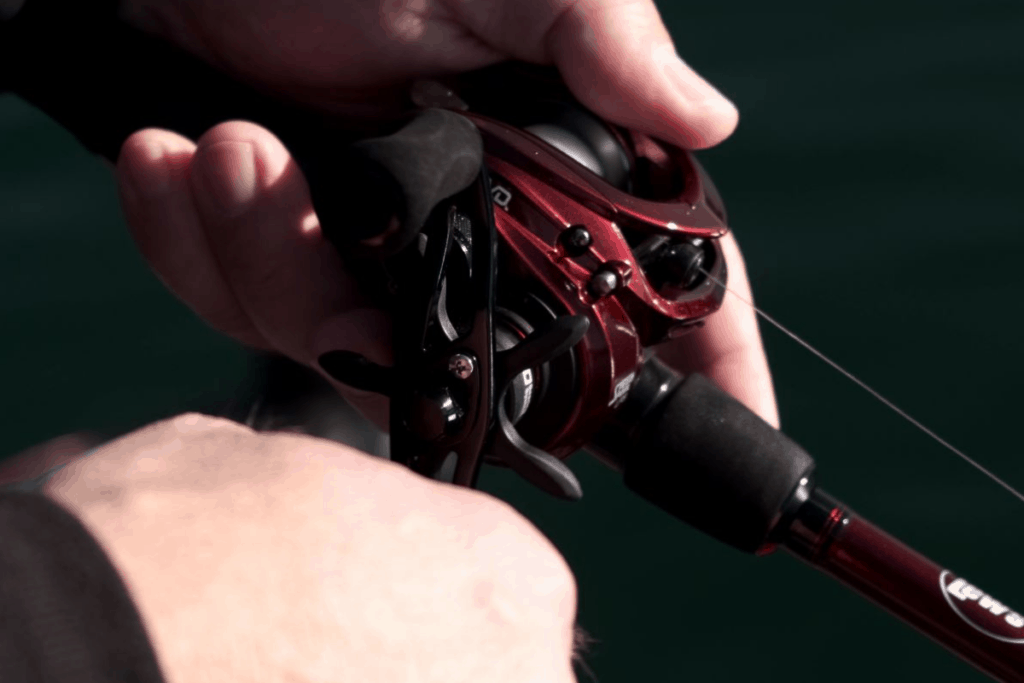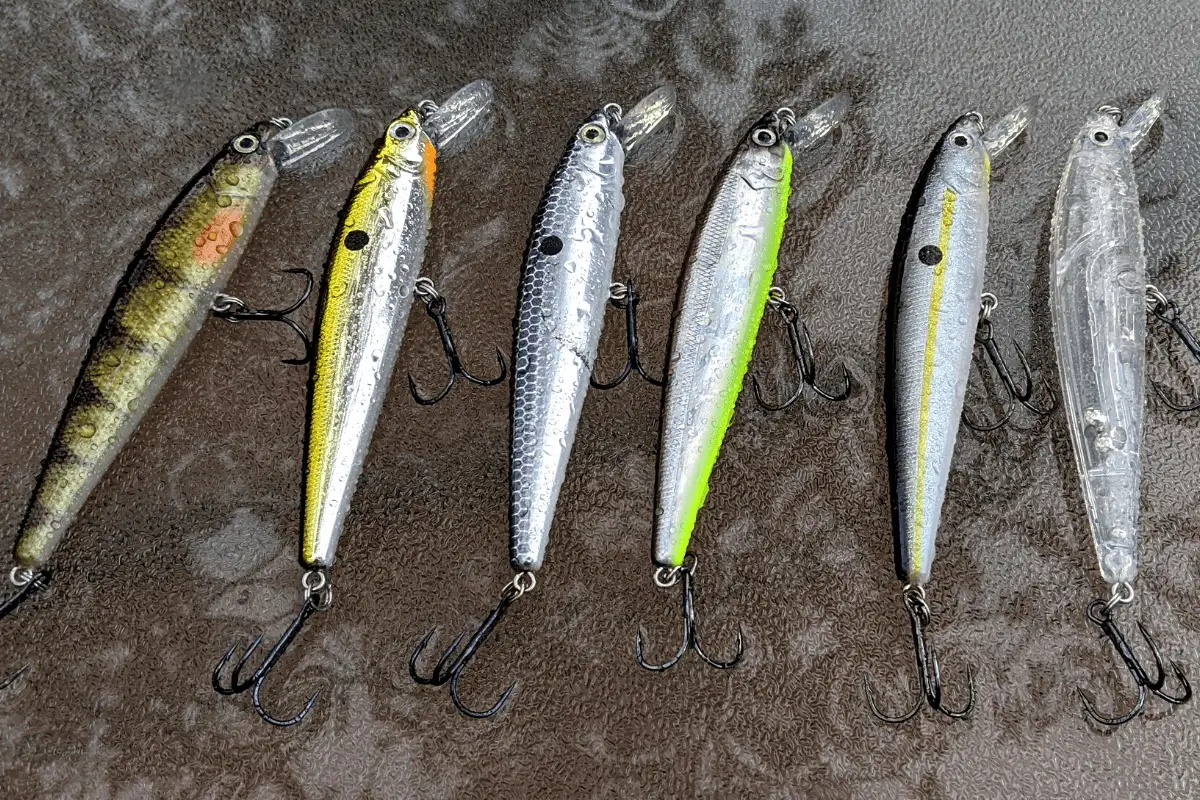Jerkbait fishing can be phenomenal during all seasons, but year-in-and-year-out anglers across the country will have a jerkbait tied on when it comes to cold water bass fishing. There is something about this suspending baitfish imitating lure that gets sluggish winter bass fired up.
To fish a jerkbait in cold water, you will want to make sure that you have a medium action rod spooled with 8-10lb fluorocarbon. The lure itself should be a suspending model, not a floater. Cast past your target, reel the jerkbait down to its maximum depth and then let it sit. And sit. And sit some more. Follow up with a twitch or two and then deadstick it again.
In this article, I am going to go over some specific tips to help you be a more efficient cold water jerkbait angler.
The Situation for a Jerkbait
It is critical to understand the situation you are going into. A jerkbait in cold water is perfect when the fish are relatively shallow. If you are fairly certain that the bass are in fifteen foot of water or less, then a suspending jerkbait is going to be a solid choice.
If the bass are deeper than that, you will want to concentrate on other winter fishing techniques. A winter Ned Rig presentation is highly effective as well as using a small swim bait.
How do you know if the bass are shallow?
First, do some research online about the fishery. Some lakes are known to hold bass shallow during the cold months, like Lake of the Ozarks. A few minutes on Google will give you a good start.
If your area is on a warming trend, there is a very good chance that the bass will be coming up and taking advantage of the warmer water.
Does the water you are going to fish have lots of rock? Is there still vegetation? If you can answer yes to either one of these, you can find winter bass shallow enough to target with a jerkbait.
What is the maximum depth of the lake you are going to fish? If the deepest part is thirty feet, you will probably find bass shallow enough to use a jerkbait on. If you are fishing a highland reservoir that bottoms out at over one hundred feet, that may be a different situation, but not necessarily.
Are the tributaries dumping in water that is warmer or colder than the body of water they are feeding into? If the runoff is warmer, you absolutely will find bass shallow. If the runoff is colder, make sure to stay away from it.
Where to start looking for Cold Water Bass
When fishing a jerkbait in cold water, I always start by investigating the north banks. During the winter, the sun’s rays hit with more direct intensity here. If the water temperature is just a couple of degrees warmer than other areas of the lake, you are in the right spot.
You also want to look for rock or vegetation. If you are lucky enough to locate a north bank with either of these types of cover, you are in good shape. Rock and vegetation will hold fish shallow throughout the winter.
The last thing I look for, when narrowing down where I will start to use a jerkbait, is some sort of life. Are there birds scavenging the area? Do you see baitfish? Are there bluegills or crappie hanging in the area? Where there is some sort of life there will likely be bass.
The Lure
For this particular scenario, I will be focusing on a suspending, hard jerkbait. Using a floating model in cold water will not produce the results that you are looking for.
There are hundreds of models on the market to choose from. I like to stick with a 2 hook version both in a medium and deep diving model. The shallower of the two will cover that 6-8ft range, and the deeper model will get down to that 10-12ft depth. With those two, you can satisfy most of your cold water jerkbaiting needs.
Lure Color
I always start with natural colors when fishing jerkbaits in cold water. On sunny days, I will tend to choose something with a little more flash and reflection. When the skies are overcast I like to stick with solid colors. In either scenario, I will focus on natural lure color.
What is the forage base in your water? If you are fishing in northern parts of the country there is a good chance the prey fish will be yellow perch, bluegill, and alewives. Select a jerkbait that is similar in color pattern.
If you call the middle regions of the country home, or the south, then odds are you will start with something that mimics a threadfin shad.
Once you find a few fish, you can adjust the color slightly to see if one gets better reaction from the bass than another. If you have a fishing buddy with you, make sure that you each have a different color on to start.

The Setup for Jerkbait Fishing
I like a medium action rod that is less than 7’ in length. Why such a short rod? To retrieve a jerkbait properly, the rod tip should be pointed at the water. If the rod is too long it will hit the surface and create chaos with your retrieve.
If you are a taller angler, you can probably use a rod that is over 7’.
The medium action rod is necessary to keep from pulling the lure out of the mouth of the bass. You want plenty of give in the rod, almost a parabolic action. This flex will still allow you to maintain pressure without horsing the lure away from the fish.
As far as line, I stick with fluorocarbon in the 6-10 pound test range. You can also use braided line with a fluoro leader. The fluoro helps because it is difficult to see, and the bass will be coming up close to get a good look at the lure.
The Retrieve
This is where the real difference lies between using a hard jerkbait in cold water as compared to warmer water months.
First, make sure that you have a long cast. You want the lure to land well beyond what you feel is the target zone. Reel the lure down to its maximum depth and then let it sit. It is unlikely that you will let the lure sit motionless for too long.
My friends used to joke that they would drink an entire can of soda before they twitched the bait again.
When you finally do move the lure, just give it a twitch or two and then let it sit motionless again.
The Bite
Most of the time, the strike will feel just like extra weight. There is not going to be an arm-ripping strike like you get in July.
The majority of the time, you won’t even know there is a fish on the lure until the next moment when you go to twitch it.
The bass will be staring at the bait and then react to it when it moves. They will grab ahold of it, but not really swim off.
The Hookset
If you feel dead weight, or anything that feels not quite right, set the hook, but not like you would during the warm water months. The hookset should be reeling down on the lure to exact pressure on the fish and at the same time use a gentle side sweep.
A good jerkbait will have small, ultra sharp treble hooks. They penetrate the fish’s lip without much trouble.
Maintain pressure throughout the battle back to the boat.
Final Thoughts
There is no doubt that fishing a jerkbait this slow takes time and patience. It may even drive you crazy at times, but it can yield big dividends when the bass are hanging out in less than fifteen foot of water.
Keep your color selection simple and natural. Pay attention to what is going on out there and set the hook with a gentle side sweep.
Good luck and be safe!

